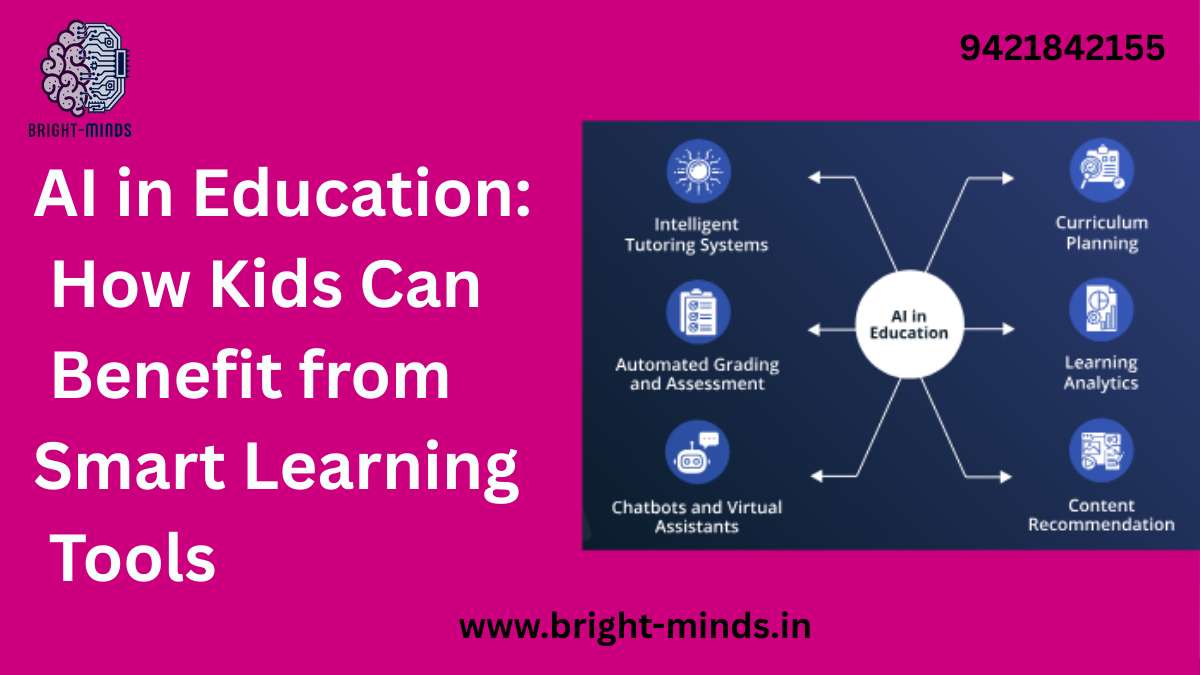Imagine a world where every child has a personal tutor available 24/7—customized to their needs, always patient, and constantly adapting to how they learn best. That world isn’t in the future—it’s happening right now, thanks to the rise of AI in education.
From smart homework helpers to adaptive learning platforms, artificial intelligence is reshaping how kids learn—and how parents and educators support them. Whether you’re a parent trying to keep up with your tech-savvy child or a company employee looking to better understand educational technology trends, this guide is your first step into the exciting world of smart learning.
Let’s explore what AI in education really means, how it’s helping kids succeed, and how you can start integrating these tools into your home or workplace learning environment.
📚 What Is AI in Education?
At its core, AI (Artificial Intelligence) refers to computer systems that mimic human intelligence—like learning from data, recognizing patterns, and making decisions. In education, AI powers tools that adapt to a child’s unique learning pace, style, and needs.
Think of:
- Apps that explain math problems step-by-step
- Reading platforms that adjust story difficulty based on comprehension
- AI-powered chatbots that answer homework questions instantly
- Personalized learning paths that help students stay on track
The goal? Make learning smarter, not harder.
📊 Market Trends: Why AI in Education Is Booming
AI in education is more than a buzzword—it’s a booming industry. According to a recent report by HolonIQ, the global EdTech market is projected to exceed $400 billion by 2025, with AI-driven learning tools taking center stage.
Key drivers behind this growth include:
- Remote and hybrid learning models post-COVID
- The rise of digital-native learners (Gen Alpha)
- Parental demand for personalized, engaging learning at home
- Increasing use of AI in school systems and corporate upskilling programs
🔍 Industry Insight: In 2024, over 60% of U.S. schools reported using AI tools in the classroom, from grading systems to language tutoring apps.
🎓 Real-World Benefits of AI for Kids
So, what does this mean for your child—or for the kids of your employees or colleagues? Let’s break it down.
1. Personalized Learning Paths
Every child learns differently. Some excel in math, while others light up when reading stories. AI tools analyze how a child interacts with content and adjust lessons to their level, ensuring no one is left behind or bored.
Example: An AI reading app may increase or decrease the complexity of text depending on how well your child reads aloud.
2. Instant Feedback and Support
Instead of waiting days for teacher feedback, kids can get real-time corrections and suggestions. This helps them learn from mistakes instantly and stay motivated.
3. Building Confidence Through Autonomy
Smart learning tools empower kids to explore and learn independently, building confidence and critical thinking. They feel in control—and that boosts motivation.
4. Safe, Engaging Environments
Many AI-powered tools come with gamified features, voice interactions, and storytelling elements, making learning fun and interactive without the usual screen-time guilt.
💡 Practical Tips for Parents and Caregivers
You don’t need to be a tech expert to support your child’s AI-powered learning. Here’s how to get started:
✅ Choose the Right Tools
Look for platforms that are age-appropriate, transparent about data privacy, and recommended by educators. Some popular ones include:
- Khan Academy Kids – Personalized early learning
- Duolingo – AI-powered language learning
- Photomath – Step-by-step math explanations
- Socratic by Google – Homework help via AI
🕒 Set Time Limits and Goals
Balance is key. Designate 20–30 minutes of smart learning time per day and mix it with hands-on activities like crafts or reading.
👪 Involve Yourself
Ask questions like:
- “What did you learn today?”
- “What was fun or hard about it?”
- “Can you teach me something new?”
These conversations reinforce learning and show your child that their progress matters.
🧠 AI and Emotional Intelligence
Interestingly, many AI tools are now being designed to support not just academics, but social-emotional learning (SEL). These tools help children recognize emotions, resolve conflicts, and build empathy—skills that are just as important as math and reading.
💬 Pro Tip: Look for platforms that incorporate mindfulness exercises or SEL check-ins into their daily routine. It’s AI with heart.
🧩 Applications in the Workplace
If you’re part of a company that supports working parents, understanding AI in education is more than just a curiosity—it’s a value add.
Here’s how companies can get involved:
- Provide access to educational platforms or subsidize subscriptions for employees’ families
- Host parenting webinars about digital tools and child development
- Offer flexible work hours to accommodate learning support at home
- Share curated learning resources on the company intranet
Supporting employees in this way not only helps their families—it also boosts morale, loyalty, and productivity.
🌱 The Future of AI in Learning
We’re just scratching the surface. Future AI in education may include:
- Voice-based tutors that respond to spoken questions
- AR/VR + AI combos for immersive learning
- Real-time learning diagnostics and progress forecasting
As these tools evolve, parents and educators who embrace them early will be best positioned to help children thrive.
You may be like this:-
The Magic of Numbers: Fun Math Tricks for Kids – Make math exciting with simple and cool tricks!

